We have been active in the diamond market since 1975 and have sourced many hundreds of diamonds for customers. We are also happy to design and make jewelry using diamonds you provide.
The GIA Diamond Grading System
When we bought our first diamonds over 40 years ago, the Gemological Institute of America (GIA) had been teaching their 4 C’s diamond grading system for decades but it was far from standard in the trade. All diamonds are graded for Cut, Color, Clarity and Carat Weight. Before the GIA grades became the standard, every diamond cutter had their own grading system and there was no way to translate one to another.
Kyle and I had lunch at a GIA conference with Richard T. Liddicoat who developed the GIA grading system. He said that the system was really developed as an educational tool to help jewelers work with the conflicting systems of grading. He never expected it to become a world standard. The GIA didn’t even copyright the grades.
Come to the Studio and Learn about Diamonds.
This library article is just a start.
Cut
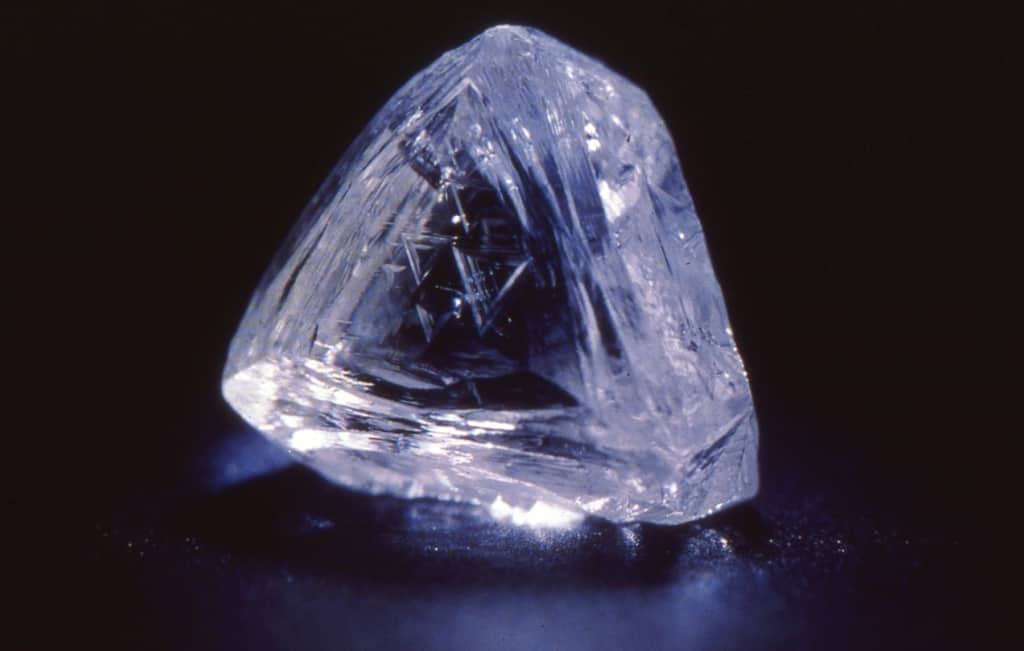
Diamond crystals are interesting but bringing out all their potential beauty as gemstones depends on cutting to the proper proportions. Cut is not the shape of the diamond— round, radiant, oval, etc. Cut is the angles, symmetry and polish that bring out the beauty of any shape. Cut is dependent on the skill of the diamond cutter but, more importantly, the decisions the cutter makes when he decides how to free the gem from the rough crystal.

The two diamonds above show how much cutting has evolved. The one on the left is typical of round diamonds cut in the early 1900’s. It has 58 facets just like the one on the right but was cut before there was a real understanding and before the necessary tools were developed. If that diamond was recut to modern proportions, removing the small edge chips in the process, it would have all the brilliance of the diamond on the right.
HALLETT diamonds are all cut like the one on the right.
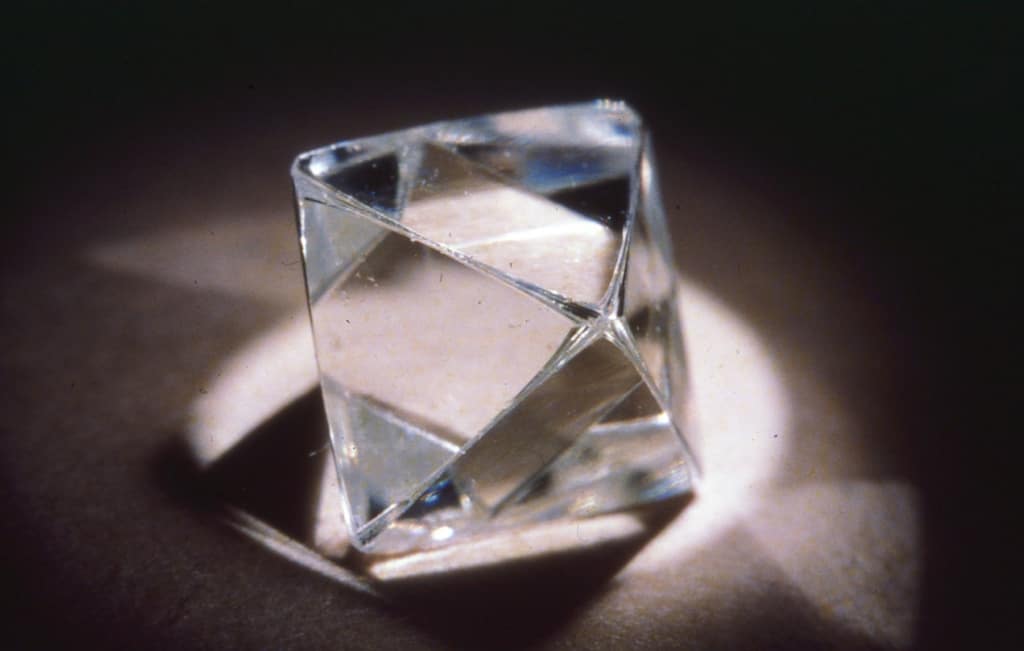
Most diamond crystals are less perfect than this one, but this is the classic octahedron shape.
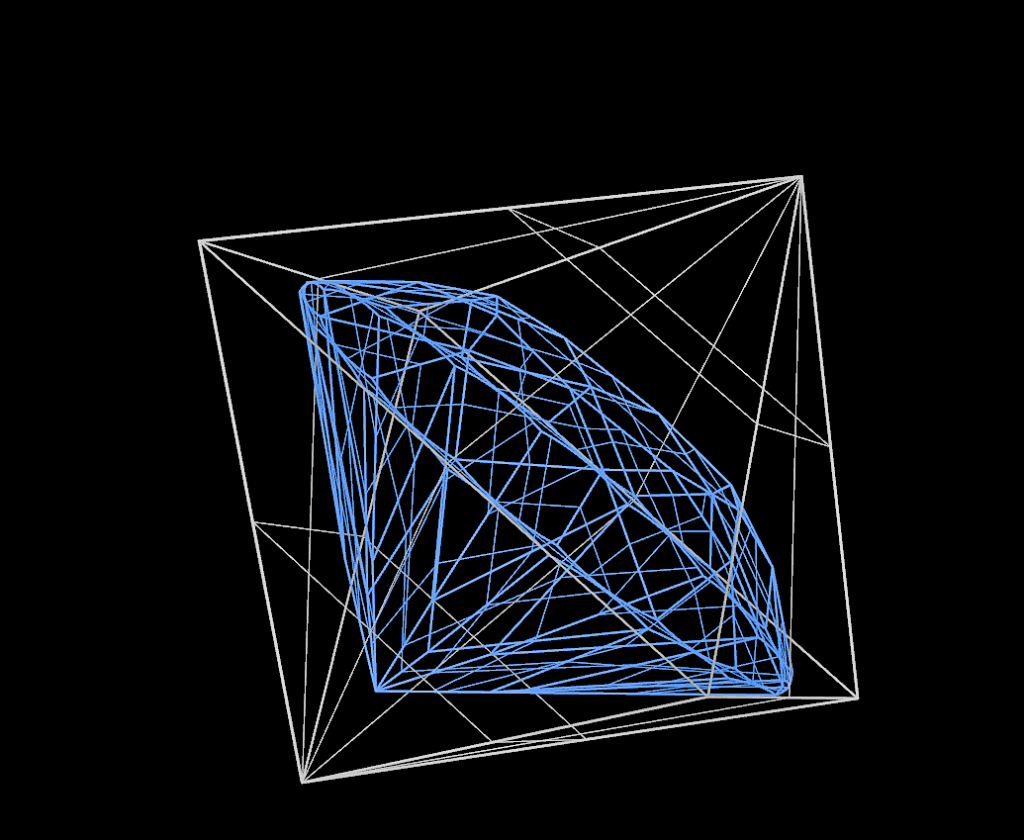
This is how a polished gem diamond is oriented in the crystal.
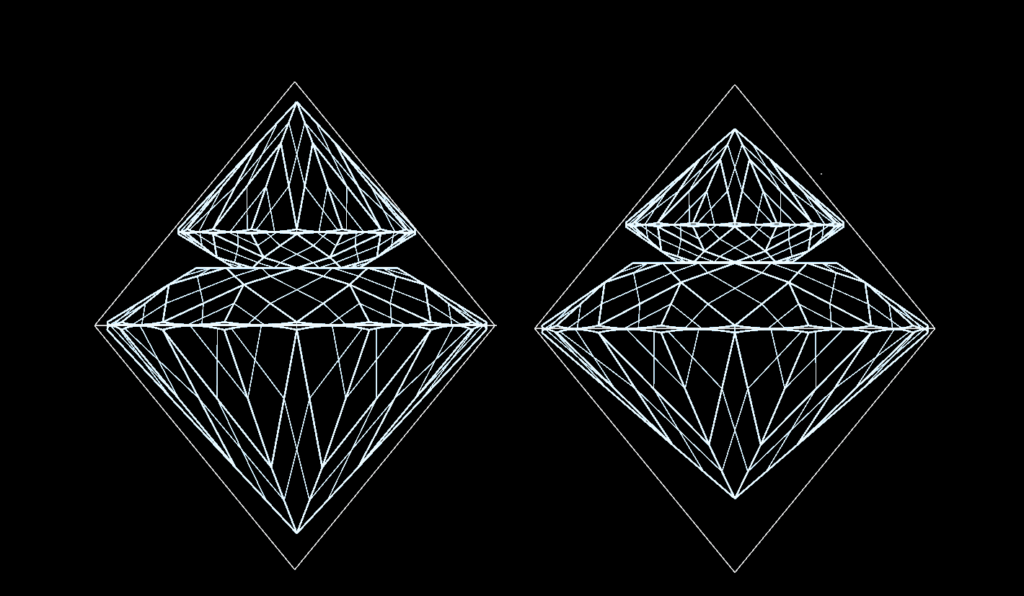
This is where the cutter makes an important decision. The two diamonds in the left crystal were cut, as many diamonds are, to save weight from the original crystal. The ones on the right were cut to maximize the reflection of light through the crystal.
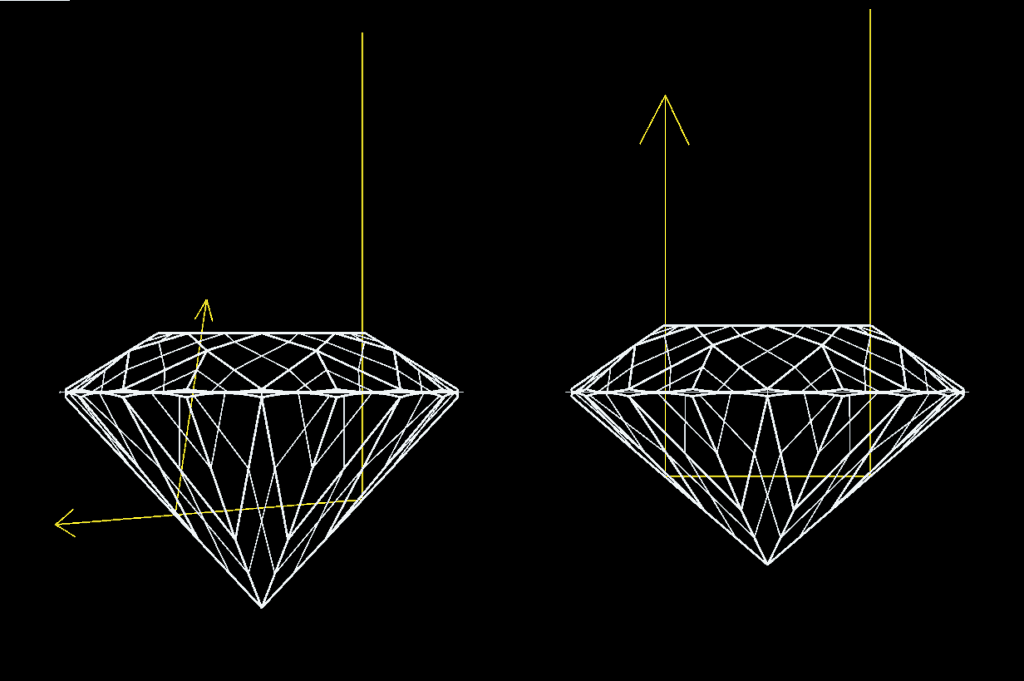
This is a simplification of how light passes through each diamond. This happens along hundreds of light paths.
Because the diamond on the left is too deep, the light leaks out the back. The diamond on the right returns much more light.
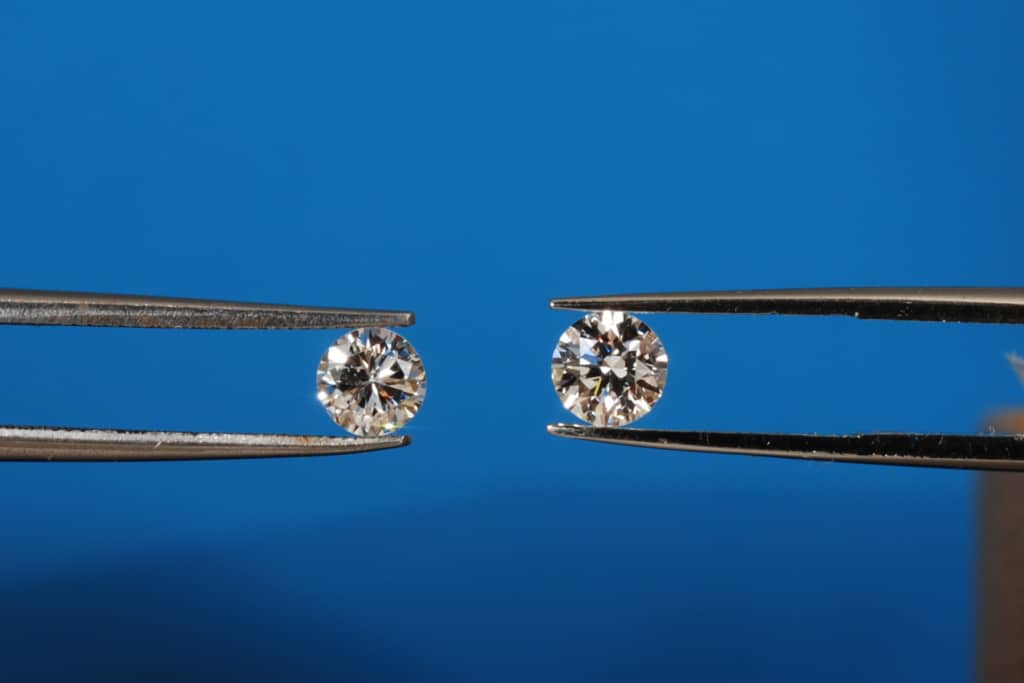
And this is the real-life result of the decisions a cutter makes.
We have these two diamonds in the studio. They are the same weight, color, and clarity. We have shown these two diamonds to hundreds of customers and asked them to choose the pretty one. No one has yet chosen the one on the left. The diamond on the right is much more pleasing to the eye because it returns significantly more light. It is visibly larger and costs only a little more.
Color

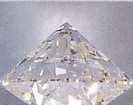
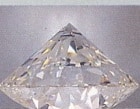
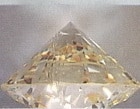
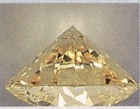
Compared to cutting, color is very easy to explain. Most diamonds are either colorless (rare and more expensive) or somewhat yellow or brown (more common and less expensive). When the GIA developed their grading system, most cutters had color grades based on A, B and C. The GIA wanted to avoid confusion and began with a top color grade of D. They still have the original “color yardstick” with samples of all the color grades from D – Z. We have a set of GIA color grading samples certified by the GIA to be identical to those original standards. Color grading is done by comparing the standard diamonds and the diamond being graded through a microscope equipped with lighting that simulates clear North daylight.
Come to the Studio and See for Yourself.
Clarity

Diamond Clarity is also easy to understand, although the grades seem more complicated. Diamond crystals can, theoretically, be perfectly clear and transparent. In nature, few things are perfect.
Perfect is rare. Imperfect is more common.
Most diamonds have a tiny trapped crystal or other crystal growth imperfection and can be graded and seen only through magnification.
GIA Clarity Grades
FL Flawless
IF Internally Flawless, minor imperfection on the surface.
VVS 1 – VVS2 Very Very Slight internal imperfections.
VS 1 – VS2 Very Slight internal imperfections.
SI1 – SI2 Slight internal imperfections.
I1 – I2 – I3 Imperfect
Clarity Grading is done by a gemologist trained by the GIA using a microscope with 10 x magnification and back lighting to make imperfections easy to see.
Because flawless is rare and significantly imperfect is common, there is a wide price range. Just as color grades above G are all “colorless”, most diamonds above SI2 are perfect to the eye except under magnification.
Carat Weight
Carat weight is simply the weight of the diamond. One carat is 1/5 of a gram. Diamonds can be cut to save weight. Diamonds can be cut for maximum beauty. We always choose beauty.
The Diamond Lab Report
Most diamonds of any size are now sold with documentation from a diamond grading organization. Many of those labs use “GIA” terminology but don’t grade to conform to GIA standards. One well-known diamond grading company advertises to jewelers: “Our grading gives your customer more for the money.”
Think about it.
Lowering the standard doesn’t give you a “better” diamond. Even true GIA Laboratory Diamond Reports need some interpretation. We will be happy to share our knowledge.